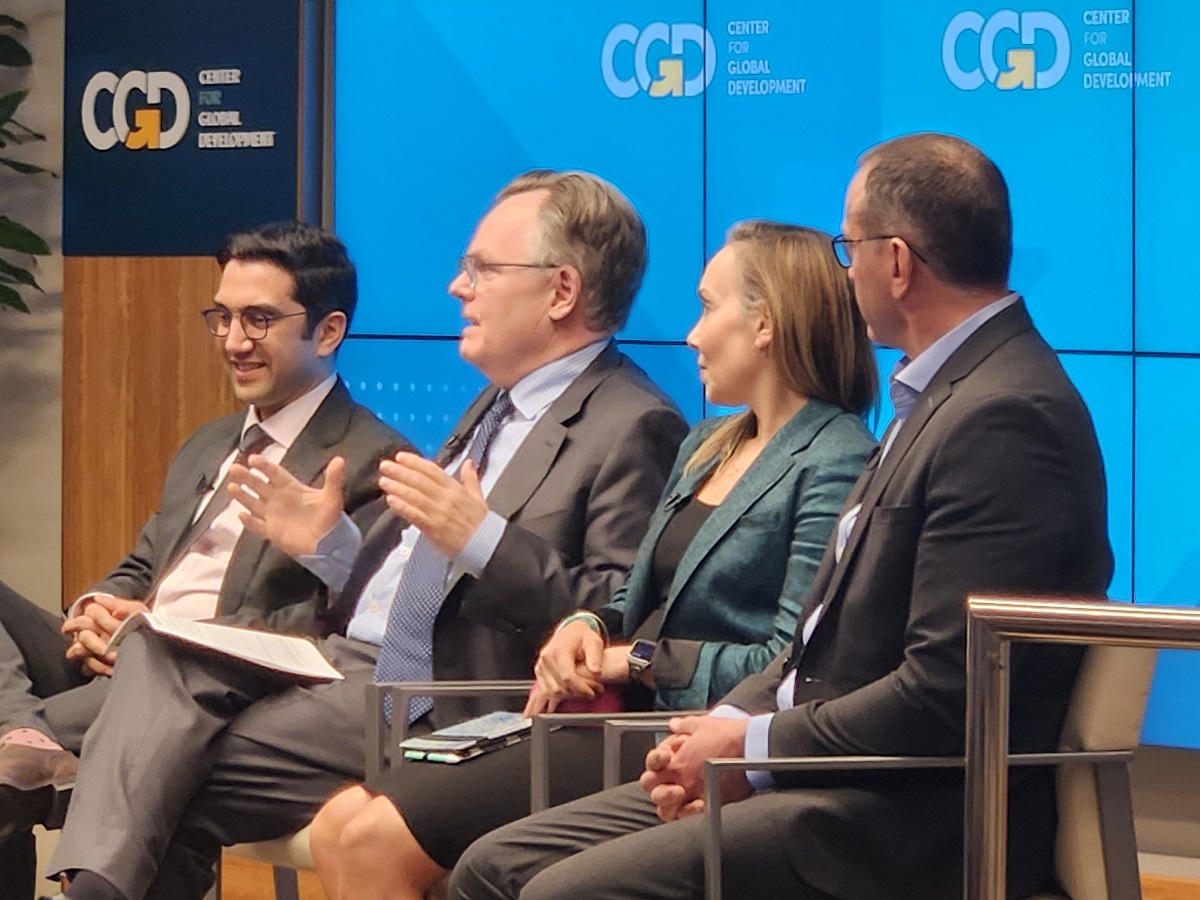Recommended

Event
Last month, the International Monetary Fund (IMF) Board approved the institution’s first Gender Mainstreaming Strategy. This is good news —and the process used by the IMF gender team to draft and seek feedback on the strategy bodes well for the implementation of this important work.
But the proof of the pudding will, of course, be in the eating.
A first step in testing out some of the proposals in the strategy will come on August 25th, when we are set to host a panel discussion featuring IMF Senior Advisor on Gender Ratna Sahay, IMF Board Executive Director Philip John Jennings, African Development Bank Gender Director Malado Kaba, and former State Bank of Pakistan Governor Reza Baqir. We hope you can join us!
Ahead of the event, here are three key questions we plan to bring into the discussion:
How will the IMF get buy-in for its role in advancing global gender equality?
The strategy reflects the IMF’s unique access to ministers of finance and central bank governors—and the leverage it has to persuade them to take a stronger leadership role in advancing gender equality within their countries. For too long, finance ministries and central banks, as well as a wider array of macroeconomists, have considered polices they develop and implement to be “gender neutral,” impacting people equally regardless of their gender. But a growing literature, including studies conducted by IMF economists, have corrected this misconception. In doing so, this research has demonstrated that considering how macroeconomic policies interact with gender dynamics is core to the IMF’s mandate—to avoid exacerbating inequality, and, ideally, working to address it through its operations.
The strategy does a good job of demonstrating gender equality’s macro-criticality, and the final strategy is also better than the original draft in acknowledging that this dynamic is a two-way street: macroeconomic policies—whether related to how (and from whom) tax revenues are collected or how government budgets are allocated—can either help promote or hinder gender equality, depending on the design and implementation of these policies.
The strategy acknowledges the “gap in the global policy space linking gender and macroeconomics” and asserts that “fiscal, monetary, financial, and structural policies that are designed with a deliberate gender focus can support stronger and more inclusive economic outcomes.” The IMF’s own surveillance, lending, and capacity development efforts with client countries are uniquely positioned to influence macroeconomic policies, and ensure they are designed and implemented with a deliberate focus on promoting gender equality.
All this makes good sense but a key challenge for the IMF will be to get broad staff buy-in to ensure fiscal and monetary policies address gender disparities where relevant. Indeed, staff will have to become advocates to convince their interlocutors in finance ministries and central banks of these links and of the attention that should be paid to them.
What are the key ingredients to ensure the success of the strategy’s implementation?
The strategy focuses on four key pathways for mainstreaming gender equality into the IMF’s operations: data, governance, partnerships, and resources.
For the IMF’s efforts to promote gender equality to be effective, it will be important for country governments to prioritize the collection and sharing of relevant gender-disaggregated data to inform research and policy dialogues. The IMF can consider offering support for this data collection and analysis—but will need to be strategic about prioritizing data relevant to macroeconomic policy design, rather than generating data that goes unused or fails to serve a specific objective. We look forward to learning more about how the IMF will complement other data platforms (e.g., the World Bank’s Gender Data Portal) and how the data it collates on its own platform will be used at country level to inform dialogues with government decision-makers and influence concrete policy reforms.
Regarding governance, the strategy discusses the creation of a centralized gender and inclusion unit in the Strategy, Policy and Review department; a gender working group; and a senior gender and inclusion accountability group. We look forward to learning more about the specific roles and responsibilities of each of these units, as well as how the governance component of the gender strategy’s implementation compares with the approach taken for other macro-critical issues such as climate or fragility. Important as these units will be, the key to effective implementation will be to ensure that these issues feature in the priorities and accountabilities for the operational economists who do a lot of the IMF’s country level work.
The strategy reflects awareness that the IMF will also need to forge partnerships with external experts and organizations with data, evidence, and tactics the Fund can learn from and leverage. It will be important to prioritize partnerships that extend beyond those with “usual suspects”—such as the World Bank and UN Women—in order to harness a variety of expert perspectives. Formalizing new partnerships, such as through the formation of an advisory group of macroeconomists with gender expertise (some of whom are members of the International Association for Feminist Economics), would help guarantee a sustained, consistent approach to soliciting expert guidance rather than ad hoc one. In particular, establishing partnerships with in-country gender equality researchers and advocates can help ensure that the Fund’s own policy dialogues and capacity building efforts align with demand-driven, local priorities and give increased voice to local expertise.
Finally, the strategy outlines plans to harness existing resources and work to expand them; for example, it refers to the 18 IMF staff members currently working on gender across 13 departments, as well as the six additional staff who will contribute to gender and inclusion work in the next three years. Our reflections on how best to maximize limited resources while increasing funding and human capital dedicated to gender equality are below.
How can the IMF couple a practical, sequenced approach with an ambitious vision?
The strategy notes the resource constraints the IMF’s gender team currently faces and that “progress is expected to be gradual and measured” as a result. We think it’s wise to manage the expectations of both internal and external stakeholders by reflecting that the process of implementing and measuring the impact of the new strategy will be a gradual one. The strategy outlines a smart approach given limited resources: selecting a small group of countries as a way of developing effective prototypes and then increasing country coverage over time.
We encourage the IMF to prioritize what the strategy characterizes as “deep dives” in a subset of countries rather than opting for a larger number of “light touch” approaches, which risk a minimal impact and potentially wasted effort. We take this lesson from the limitations of past gender mainstreaming efforts at other development institutions, which have often focused on “box ticking” or a process of doing generalized gender analysis to the detriment of fully pursuing specific outcomes, leading to a risk of “hitting the target while missing the point.”
In addition, we hope that the IMF will seek to maximize the impact of existing resources while simultaneously working to increase resources dedicated to gender mainstreaming efforts over time, perhaps by following the World Bank’s approach of launching a gender-focused trust fund. Just as the IMF’s leadership have allocated significant resources to climate, fragility, and other macro-critical issues, so too should they prioritize ensuring the successful implementation of the new gender strategy through adequate resourcing and strong governance.
Be sure to join us on August 25th for our event introducing the strategy and discussing the key ingredients for its success. We look forward to engaging with our panelists and the wider audience on these important questions.
Disclaimer
CGD blog posts reflect the views of the authors, drawing on prior research and experience in their areas of expertise. CGD is a nonpartisan, independent organization and does not take institutional positions.






